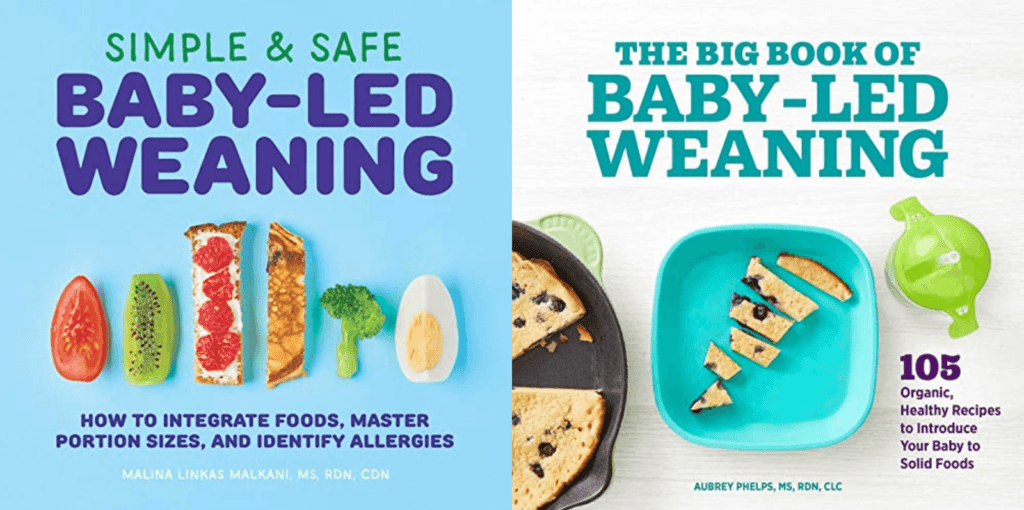In this post, you’re going to learn how to sleep train for naps.
What Is Sleep Training For Naps?
Sleep training for naps is the process of teaching a baby or young child to fall asleep and stay asleep during their daytime nap times.
It involves establishing a consistent nap time routine, creating a soothing sleep environment, and gradually teaching the child to self-soothe and fall asleep on their own without relying on external stimuli such as rocking, being held, or using pacifiers.
Sleep training for naps can help babies and young children get the rest they need during the day, which can improve mood, behavior, and overall health.
Related: When Do Babies Go From 2 Naps To 1
Importance of a Good Nap Routine
Establishing a good nap routine for babies is essential for their overall development and well-being.
Here are some reasons why:
1. Promotes healthy growth: Napping is crucial for a baby’s growth and development, as it allows the body to repair and regenerate cells. It also helps in the production of growth hormones that are responsible for physical development. (source)
2. Reduces fussiness: When babies are overtired, they tend to become cranky, irritable, and difficult to soothe. Regular naps prevent fatigue and help reduce fussiness and irritability. (source)
3. Improves cognitive function: Napping has been linked with improved cognitive function in babies. It enhances their learning abilities, memory, and attention span, making them better prepared for future academic success. (source)
4. Boosts immunity: During sleep, the body produces cytokines, which play a vital role in immune function. Adequate napping can boost a baby’s immune system and help fight off infections. (source)
5. Enhances mood: Napping can improve a baby’s emotional well-being by reducing stress levels and improving their overall mood. This can lead to happier, more contented babies, which translates into happier parents. (source)
Overall, establishing a good nap routine for babies can have significant benefits for their physical and emotional development.
Related: Receiving Blanket vs Swaddle
How To Sleep Train For Naps?
#1. Set Up A Nap Schedule
Observe your baby’s natural sleep patterns.
A baby’s sleep needs change as they grow, so it is important to observe their patterns to establish a proper nap schedule.
You can determine the time of day when your baby is naturally sleepy.
Once you’ve observed your baby’s sleep patterns, you can establish regular nap times. Make sure that these times occur at roughly the same time each day, so that your baby can get into a routine.
Related: Top 7 Alternatives To Swaddling to Soothe Your Baby
Recommended Nap Times By Age
– Newborns (0-6 months): newborns typically nap for short periods throughout the day and night, averaging 16-17 hours of sleep total per day.
– Infants (6-11 months): infants typically take 2-3 Naps per day, totaling 13-14 hours of sleep per day and the longest sleep period is about 6 hours on average.
– Toddlers (1-2 years): toddlers usually take 1-2 Naps per day, with a total of 8-9 hours of sleep per day.
(source)
The length of each time varies and can go from 10-15 minutes to 3 hours.
#2. Create A Sleep-Conducive Environment
Creating a sleep-conducive environment for babies is essential for their healthy growth and development.
Here are some tips to help:
1. Keep the room dark: Babies sleep better in a dark, quiet environment. Use blackout curtains or shades to block out light.
2. Maintain a comfortable temperature: The ideal temperature for a baby’s room is between 68-72°F. Make sure the room is not too hot or too cold.
3. Use a white noise machine: A white noise machine can help drown out any external noises and create a soothing environment for your baby.
4. Develop a bedtime routine: Establishing a consistent bedtime routine can help signal to your baby that it’s time to sleep. Start with a soothing bath, followed by a story or lullaby.
5. Avoid over-stimulation: Limit the number of toys or decorations in the room. A cluttered environment can be over-stimulating and make it harder for your baby to fall asleep.
6. Ensure a safe sleeping space: Always place your baby on their back to sleep and avoid placing any loose objects in their crib.
Related: Newborn Doesn’t Like Swaddle? Here’s What to Do Instead
#3. Create A Soothing Nap Routine
Here is a soothing nap routine that you might find helpful:
1. Start by dimming the lights and creating a calm atmosphere in your baby’s room.
2. Consider playing some soft, gentle music or white noise to help soothe your baby.
3. Read a short story or sing a lullaby to help your baby wind down.
4. Change your baby’s diaper, if needed, and dress them in comfortable sleepwear.
5. Make sure their blanket or sleep sack is on snugly but not too tight.
6. Offer a pacifier, if your baby uses one.
7. Settle your baby into their crib or bassinet, ensuring that they are lying on their back.
8. Give your baby a gentle massage and cuddle to help them feel secure and loved.
9. Turn on a sound machine that mimics a heartbeat or womb sounds.
Related: 10 Best Books For New Moms
#4. Address Common Sleep Issues
Some common sleep issues for babies include:
1. Difficulty falling asleep
This can often be due to overstimulation before naps or an inconsistent naps routine. It can also be a sign that the baby is not getting enough physical activity during the day.
Solution: Establish a consistent routine that includes relaxing activities before naps such as reading a book or listening to calming music. Ensure that the baby is getting enough physical activity during the day.
2. Short naps
Some babies may struggle with taking long naps during the day, which can lead to overtiredness and difficulty sleeping during the night.
Solution: Encourage longer naps by creating a sleep-friendly environment such as a dark, quiet room with a comfortable temperature. Stick to a consistent nap schedule and offer comfort and reassurance when the baby wakes up.
3. Refusing to sleep in their crib
Babies may prefer to sleep in their parent’s bed or a swing or bouncer instead of their crib.
Solution: Gradually transition the baby to their crib by placing them there during naps and gradually increasing the time they spend in it. Use a soft mattress and comfortable bedding to make the crib feel cozy and safe.
Related: 10 Tips For Successful Breastfeeding
#5. Don’t Skip Naps
Naps are an essential part of a baby’s daily routine as they provide much-needed rest and help to regulate their sleep patterns.
Infants and toddlers need more sleep than adults, and missing a nap can make them overtired, cranky, and irritable.
Sleep is essential for a baby’s physical and mental development. Skipping naps can lead to poor concentration, behavioral issues, and even sleep deprivation. (source)
Related: How To Combine Breastfeeding And Pumping?
#6. Encourage Self-Soothing
Self-soothing is an important skill for babies to learn, as it helps them develop independence and manage their emotions.
Here are some tips to encourage self-soothing:
1. Use comfort objects- a favorite stuffed animal or blanket can provide a sense of security and comfort.
2. Respond to your baby’s cries- but don’t pick them up immediately every time they cry. Give them a chance to self-soothe before intervening.
3. Practice gradual separation- start by moving away from your baby for short periods of time during the day and gradually increase the time apart.
Remember that every baby is different and some may take longer to develop self-so o thing skills than others. Be patient and consistent in practicing these techniques.
Related: Top 8 Breast Pumping Tips For New Moms
How to Transition From 2 Naps To 1?
Between 12 and 24 months of age, most babies transition from two naps to one nap. (source)
Here are some tips that might help make the transition easier:
1. Pay attention to your baby’s signals: Observe your baby for a few days and note the length of time they sleep during each nap. This will help you determine when they are ready to switch from two naps to one.
2. Gradually increase morning wake time: Start by gradually increasing the length of time your baby stays awake in the morning. For example, if your baby usually wakes up at 7 am and takes their first nap at 9 am, try to keep them awake until 9:15 am or 9:30 am for a few days.
3. Stick to a consistent schedule: Try to establish a consistent sleep schedule for your baby by keeping nap times and bedtimes as consistent as possible. This helps your baby get into a routine and adjust to the new sleep schedule more easily.
4. Be patient: Remember that this transition may take a few weeks and your baby may be a little cranky or fussy during this time. Be patient and stay consistent with the new schedule.
Related: Top 8 Breast Pumping Tips For New Moms
Conclusion
Every baby is different, so be patient and flexible as you sleep train your baby for naps.
If you have any concerns about your baby’s sleep habits, talk to your pediatrician for guidance.
FAQ
Should I Wake Baby From a Nap?
As a general rule, it is not recommended to wake a baby from a nap unless there is an urgent need to do so.
Babies need plenty of sleep for their growth and development, so it’s important to let them sleep when they need to.
If your baby has been napping for a long time and it’s close to bedtime, you may want to consider gently waking them up so that they don’t have trouble falling asleep at night.
However, if your baby is still in the early stages of their nap and seems peaceful, allowing them to continue sleeping is usually the best option.
Should You Swaddle For Naps?
Swaddling can be a helpful technique for soothing a newborn during sleep.
Many babies enjoy the feeling of being wrapped snugly and find it calming.
It is recommended that you stop swaddling your baby around 2 months of age or when they start exhibiting signs of rolling over, whichever comes first.
At this point, swaddling can become dangerous as it may restrict their movement and increase the risk of suffocation.
It’s always best to consult with your pediatrician before making any changes to your baby’s sleep routine.
Should Newborn Daytime Naps Be In The Dark?
It is not necessary for newborn daytime naps to be in complete darkness, but it can be helpful to create a sleep-conducive environment.
Dimming the lights or drawing curtains to darken the room can signal to the baby’s body that it’s time to rest.
Additionally, keeping the noise level low and maintaining a comfortable temperature can help promote better napping.
However, it’s important to note that every baby is different, and some may prefer napping with some natural light or with some background noise.
As long as your baby is getting enough rest and seems comfortable, you can adjust the sleep environment based on their preferences.
Why Does My Baby Wake Up Screaming From Naps?
There can be several reasons why a baby wakes up screaming from naps, including:
1. Discomfort or Pain – Your baby may be experiencing some sort of discomfort or pain such as gas, teething, or an ear infection.
2. Hunger – Your baby may wake up screaming because they are hungry and need to be fed.
3. Overstimulation – If your baby is easily overstimulated, loud noises or bright lights could cause them to wake up screaming.
4. Separation Anxiety – As babies develop, they can start to experience separation anxiety, which can cause them to wake up screaming when left alone. (source)
If you’re concerned about your baby’s behavior, consider speaking with your pediatrician to rule out any medical issues.




